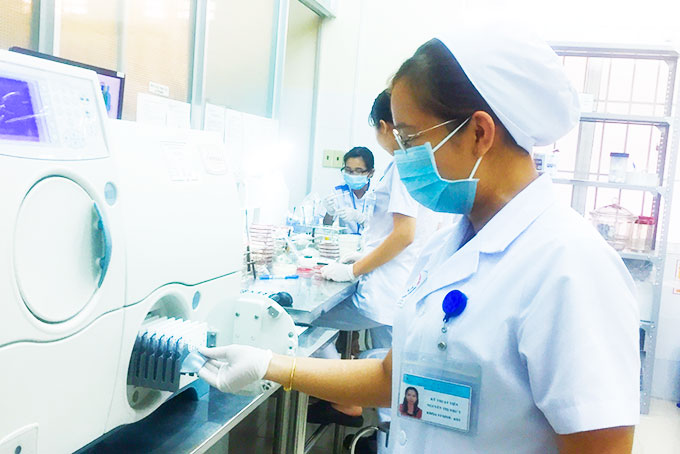
A so-called flesh- eating bacterium can be as terrifying and deadly as it sounds. In fact, the story is different with Whitmore's Disease...
A so-called flesh-eating bacterium can be as terrifying and deadly as it sounds. In fact, the story is different with Whitmore's Disease. Cases of Whitmore's Disease were found and successfully cured by Khanh Hoa Health Department many years ago.
Knowledge of the disease
Dr. Nguyen Vu Quoc Binh, Vice-Director of Khanh Hoa Hospital of Tropical Diseases confirms Whitmore's Disease is an acute infectious disease caused by a bacterium called Burkholderia pseudomallei while flesh-eating bacterium is a nickname for Vibrio vulnificus as it can cause rapid destruction of tissues. Whitmore's Disease was first discovered in Vietnam in 1925. The disease often appears in rainy seasons. Susceptible to the infection are farmers and those with diabetes, chronic renal disease, chronic lung diseases, alcohol abuse, etc.

|
The average incubation period is 9 days or even 21 days. The clinical signs include fever, cough, chest pain, and headache to anorexia, shortness of breath and muscle soreness which may be mistaken for the infection of another disease. Accurate diagnosis is based on tests on samples of blood, urine, sputum and spinal fluid. Whitmore becomes life-threatening when patients are suffering from septicemia, pneumonia and organ failure. Proper antibiotics may work well for the disease.
The bacteria are found in contaminated water and soil and spread to humans and animals through direct contact with the contaminated source. The most common route of infection is through open wounds on the skin. The disease is not spread from humans to humans, from animals to humans through the air. No vaccination against the disease is available now. Therefore, to prevent the infection, it is essential to wear proper rubber gloves and boots when contacting with agricultural land or blackish water, according to Dr. Huynh Van Dong, Director of Khanh Hoa Center for Disease Control.
Active diagnosis and treatment
Since the beginning of the year, no case of Whitmore has been reported. However, proactive measures have been taken by medical staff of Khanh Hoa Hospital of Tropical Diseases to prevent the disease. Medical staff has been fully provided knowledge of symptoms, clinical signs and initial treatment. Diagnosis and testing to identify the bacteria have been properly and carefully performed. The hospital has also prepared sufficient antibiotics for the disease.
Dr. Nguyen Vu Quoc Binh says 1 case of Whitmore was reported and successfully cured at the hospital in 2017. Therefore, the hospital has had experience in dealing with the disease from the treatment 2 years ago. Patients must go to the hospital early for the best treatment.
The directorate of Khanh Hoa General Hospital has directed constant updating the knowledge of Whitmore and its Department of Medicine to prepare sufficient antibiotics for the disease, especially the Department of Microbiology & Parasitology to well identify the bacteria for proper and timely treatment.
Dr. Le Thi Lan Anh, Chief of the Department of Microbiology & Parasitology, Khanh Hoa General Hospital says the Department of Microbiology & Parasitology has been equipped with microbial identification machine which allows fast, accurate identification of microbes, including those for Whitmore. Besides, manual testing measures together with quick identification tests are also available. Years ago, the department found the bacteria in suspected samples sent from the Department of Clinical Medicine and successfully cured the patients. 4-5 cases are reported a year on average with 4 cases found and successfully cured in 2018.
C.Dan
Translated by N.T









